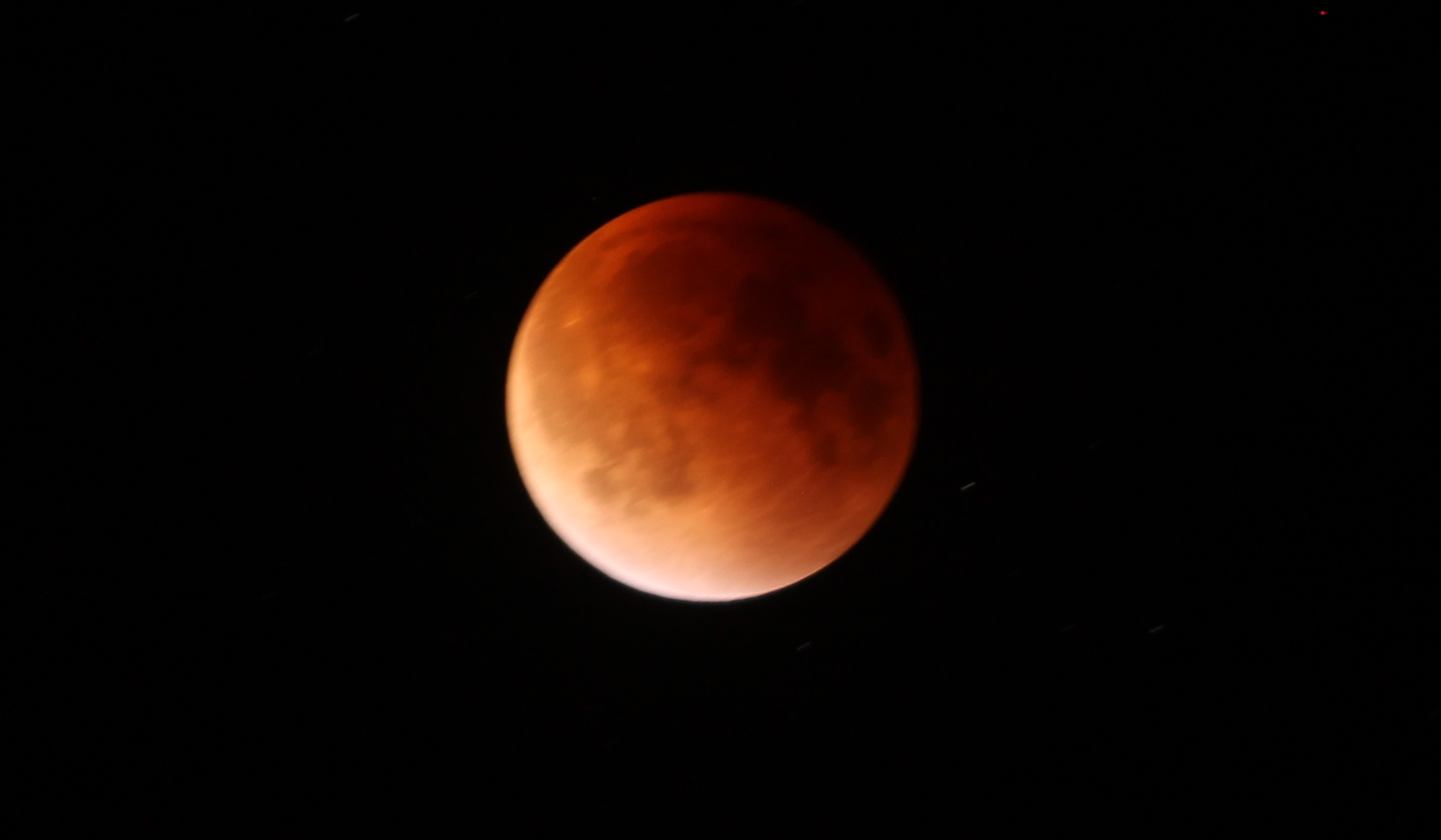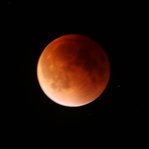A total lunar eclipse, what is known as a “Blood Moon,” will occur on Tuesday, November 8, 2022. This will be the last total lunar eclipse for three years as the Sun, Earth and Moon align so that the Moon passes completely through the Earth’s shadow, according to NASA.
The Blood Moon
The Blood Moon is so called because as the Moon passes through the Earth’s shadow it takes on a reddish color.
The total lunar eclipse won’t happen again until March 14, 2025 (although NASA says that we will continue to see partial and penumbral lunar eclipses during that time.)
Unlike a solar eclipse, it is perfectly safe to observe a lunar eclipse with the naked eye in a dark area. Binoculars and telescopes will enhance the phenomenon.
You’ll have to get up early to watch this lunar eclipse.
The "first bite" taken out of the Moon during a total lunar eclipse in 2015. Photo: Lon S. Cohen.
What to expect.
- The Moon will begin to enter the outer part of the Earth’s shadow - called the penumbra - at 3:02am. At this point the Moon will begin to dim.
- By 4:02am, the Moon will be partially eclipsed. At this point it looks like a bite is being taken out of the Moon.
- A little over an hour later at 5:17am, the total lunar eclipse begins and the entire Moon is now in the Earth’s umbra or shadow. This is when the Moon will turn a coppery-red. Try binoculars or a telescope for a better view. If you want to take a photo, use a camera on a tripod with exposures of at least several seconds.
- At 6:42am, the Moon exits Earth’s umbra and the red color fades. It will look as if a bite is being taken out of the opposite side of the lunar disk as before.
Why does the Moon turn red during a lunar eclipse?
The blood moon taken during a total lunar eclipse September 2015. Photo: Lon S. Cohen.
According to NASA, the same phenomenon that makes our sky blue and our sunsets red causes the Moon to turn red during a lunar eclipse. It’s called Rayleigh scattering. Light travels in waves, and different colors of light have different physical properties. Blue light has a shorter wavelength and is scattered more easily by particles in Earth’s atmosphere than red light, which has a longer wavelength.
Red light, on the other hand, travels more directly through the atmosphere. When the Sun is overhead, we see blue light throughout the sky. But when the Sun is setting, sunlight must pass through more atmosphere and travel farther before reaching our eyes. The blue light from the Sun scatters away, and longer-wavelength red, orange, and yellow light pass through.
During a lunar eclipse, the Moon turns red because the only sunlight reaching the Moon passes through Earth’s atmosphere. The more dust or clouds in Earth’s atmosphere during the eclipse, the redder the Moon will appear. It’s as if all the world’s sunrises and sunsets are projected onto the Moon.














